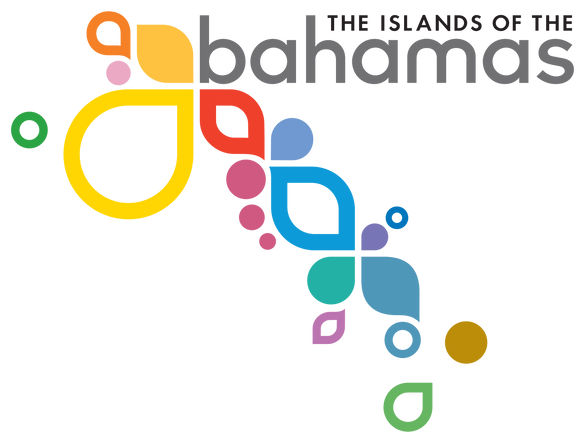 10 Sep 2025
10 Sep 2025
THE ISLANDS OF THE BAHAMAS
OVERVIEW
History
The Commonwealth of The Bahamas was originally settled in the ninth century by Lucayan Indians. In 1492, Christopher Columbus landed on Guanahani, later naming it San Salvador. Conquistadors soon followed in pursuit of gold, killing off the Lucayans with disease, enslavement and hardship.
English settlers arrived in 1648 in search of religious freedom and named the island on which they landed Eleuthera — from the Greek word for freedom. During the late 1600s to early 1700s — the age of piracy — the shallow waters of The Bahamas made great hiding places for treasure, attracting many privateers and pirates, including Edward Teach better known as Blackbeard and Calico Jack Rackham.
After several years of unstable rule, The Islands of The Bahamas became a Crown Colony, and Captain Woodes Rogers was appointed the first Royal Governor. During the American Revolution, the islands fell to Spain and were not restored to Great Britain until 1783. British Loyalists soon emigrated to The Islands of The Bahamas, many bringing enslaved Africans with them. A slave-free society was declared in 1834 by the British Emancipation Act. A four-year apprenticeship period was introduced with full emancipation of slaves coming in 1838 at the end of the apprenticeship period.
After nearly 325 years of peaceful British rule, on 10 July 1973, The Commonwealth of The Bahamas declared its independence. The Bahamas now has a parliamentary democracy and a Governor General as head of state.
Location:
Although considered part of the Caribbean, the archipelago that makes up The Bahamas lies in the Atlantic, just 50 miles off the eastern coast of Florida.
Size:
The Bahamas is plural for a reason — there are approximately 700 islands, plus 2,500 cays scattered across 100,000 square miles of Atlantic Ocean.
Islands:
The Bahamas has 16 major islands that are available for international tourism. They are:
|
|
Population:
Approximately 385,000 people live in The Bahamas, with the two most populated cities being Nassau on New Providence Island and Freeport on Grand Bahama Island.
Airlift:
The Bahamas has 20 international airports welcoming regularly scheduled flights from around the world. Travellers can take advantage of ample nonstop and connecting service from many major cities in the U.S., Canada, Europe and Latin America.
Nassau's Lynden Pindling International Airport is the hub for international arrivals as well as connecting flights to dozens of Out Islands — also known as the Family Islands. Private charter service is also readily available.
Accommodations:
Travellers have a wide selection of accommodations to choose across The Bahamas' 16 islands. From large cosmopolitan resorts and all-inclusive properties to intimate boutique hotels, beachfront bungalows and vacation rental properties, there is something to meet all styles and preferences.
Activities / Best Experiences:
As an island nation, The Bahamas boasts some of the most stunning beaches and the clearest water on earth, but that's not all. The destination is celebrated for its superior water-focused experiences and adventures, with some of the world's best scuba diving, fishing, sailing and boating.
- Diving & Snorkelling: The Bahamas offers some of the world's best dive sites, including the world's third-largest barrier reef off the island of Andros. From coral reefs and gardens to shipwrecks and maybe even sunken treasure, few places on Earth have a wider variety of diving opportunities awaiting both novice and experienced divers.
- Fishing: Whether you're a first timer casting a line from a pier or a deep-sea fanatic, eager to beat one of the over 50 world records set here, the waters of The Bahamas are full of fish — bonefish in saltwater flats and prized marlin in the deep seas.
- Boating: Crystal-clear water and perfect weather year round make The Bahamas one of the most popular destinations in the world and for sailors to enjoy a first-class experience. From powerboat adventures to exceptional sailing and yachting, there is something for everyone.
- Romance: With secluded cays and serene beaches, The Bahamas is an ideal destination for a romantic Whether looking for a destination wedding, a tropical location to pop the question, an adventure-filled getaway or a relaxing honeymoon or vacation for two, travellers will fall in love with The Bahamas.
Cuisine:
Fresh seafood is a staple of Bahamian cuisine, with conch dishes playing a particularly big role. Visitors can indulge in specialties, including conch fritters, conch salad and cracked conch, among other favourite dishes. The local spiny lobster and fish such as grouper, yellow tail, wahoo and red snapper are popular on menus in The Bahamas, while traditional side dishes including baked macaroni and cheese and peas and rice complete any meal. Every island in The Bahamas has a Fish Fry, which is usually a collection of street vendors or beach shacks, where some of the best, most authentic cuisine in The Bahamas can be found.
Culture:
The Bahamas has a unique and colourful culture which has evolved over generations, comprising a mixture of mostly African, combined with some British and American influences. Celebration and community are foundational to Bahamian culture, with art, cuisine, music and dance being important components.
The Bahamas has a number of annual cultural festivals, with Junkanoo being the largest and most popular. Nothing is more indigenous and unique to Bahamian culture than Junkanoo. It is a festive parade complete with colourful costumes and headdresses, goatskin drums, clanging cowbells, whistles and horns that takes place on Boxing Day and on New Year's Day. Paraders “rush” in organised groups and are judged on costume theme and performance in a competition which captures the spirit of all Bahamians at this very special time of the year.
Travellers seeking an authentic and immersive Bahamian experience can participate in the People-to-People programme, an opportunity for visitors to be matched with a Bahamian volunteer for a day or evening activity during which they can learn about the country and the culture from the locals who know it best.
When to Go:
The weather in The Bahamas is pleasant year round, with temperatures ranging from 80 to 90 degrees (26 to 32 degrees Celsius) during the summer and averages a comfortable 70 degrees (21 degrees Celsius) in the winter. This always-balmy weather means that The Bahamas does not really have an off season, although some periods are busier than others. March is historically the busiest month due to spring break travel; however, most visitors come to The Bahamas between the months of March and August.
Hurricane season in The Bahamas runs from 1 June to 30 November. In the event of a hurricane, one or more islands may be impacted; however, the majority of The Bahamas' 16 islands will remain available to travellers.
Considerations:
- A valid passport that is current for the duration of stay is required to enter The Citizens from countries other than the U.S. and Canada may also require a visa.
- S. currency is accepted and is interchangeable with the Bahamian dollar.
- Electricity in The Bahamas is on the same standard as in the United States, and most of the power outlets are compatible with American appliances. British and European appliances require a two-pin flat adapter and a 220-volt converter.
- Mobile phones and devices will work in The Bahamas. The country's primary telecommunications provider, BTC, has roaming agreements with 128 companies around the world, while Wi-Fi is readily available in hotels and many public
# # #



